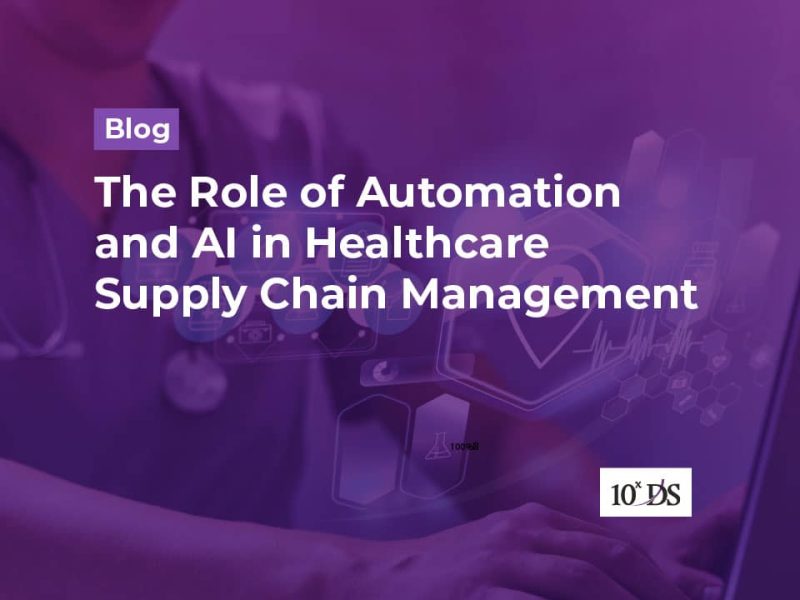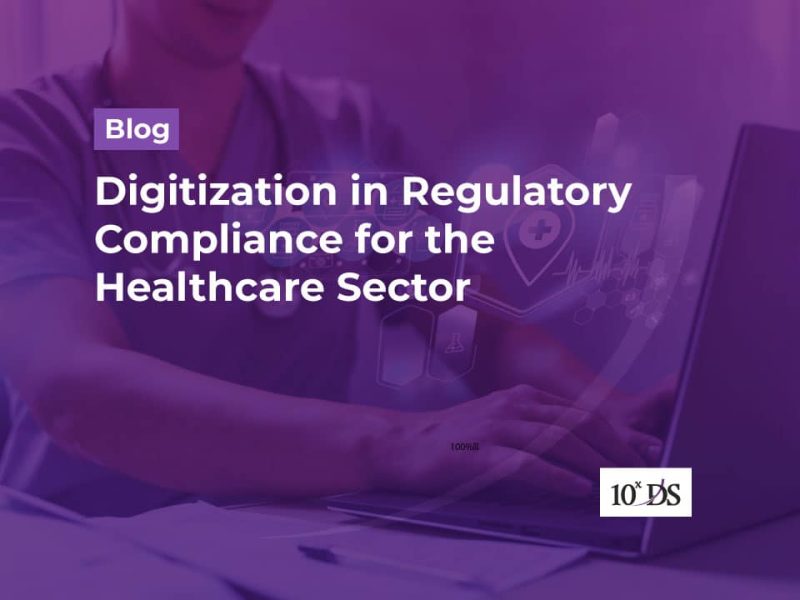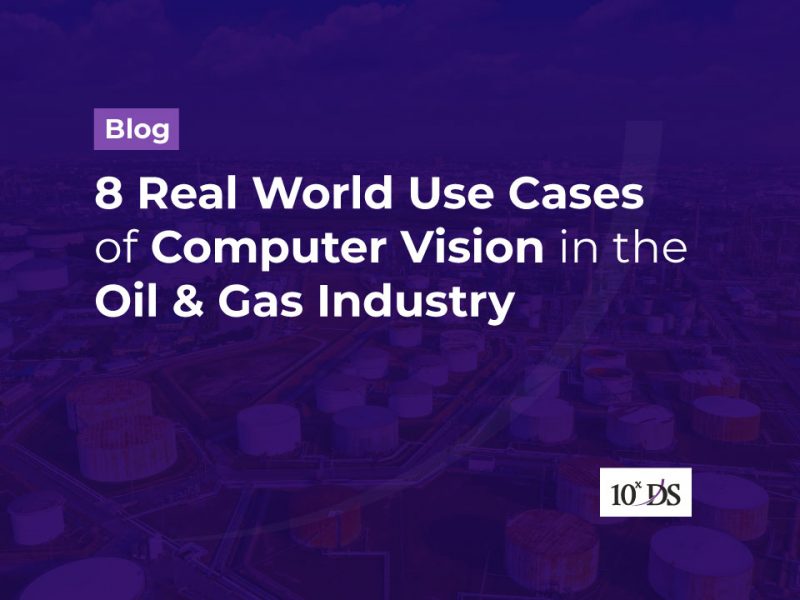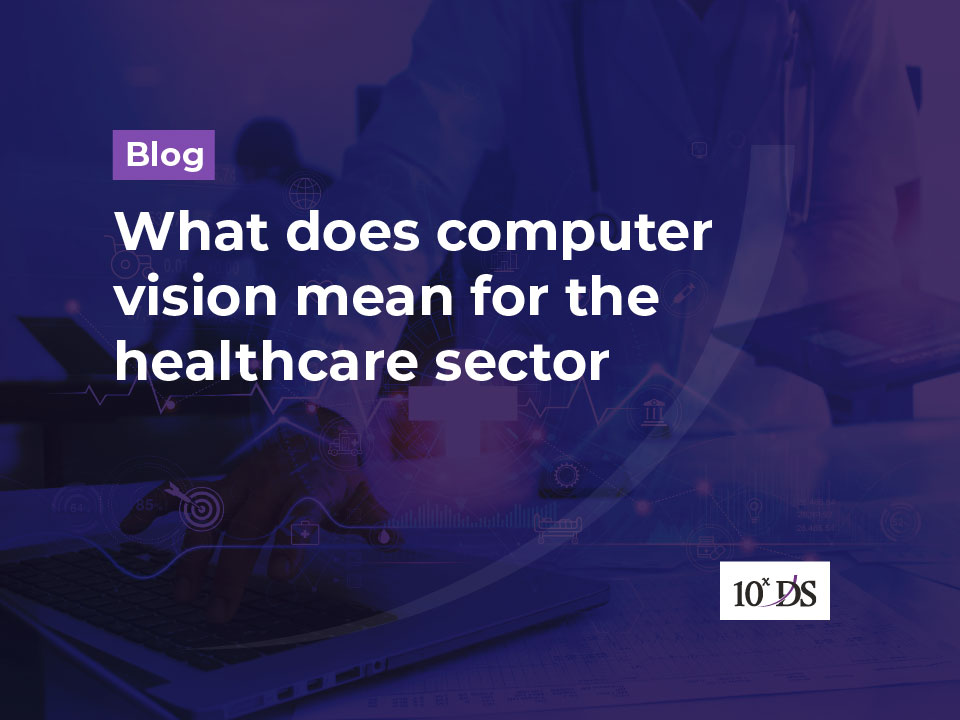
What does Computer Vision mean for Healthcare Sector
Looking beyond our vision limits and what is beyond our reach have always excited humans; technology in these times has made possible through Computer vision aka CV. Computer vision is a machine’s ability to mimic human vision. This AI-based technology is used with high-tech cameras and sensors to visualize and extract information that can be used for a variety of applications. It is a revolutionary advancement in technology that delve into almost every industry in the world including healthcare. Market spectators predict that the global market for computer vision solutions in the healthcare sector is projected to significantly grow. If we take a closer look, most governments consider the provision of quality healthcare services at the top of their mind, and they accept computer vision as one of the most ground-breaking technologies in this industry. Let us go through and find the major advantages that people should expect from CV in healthcare.
Advantages of Computer vision in the healthcare sector
Computer vision is used in the healthcare sector to improve medical treatments and procedures, accelerate healthcare research, and improve the overall patient experience. It also enables healthcare professionals to make better decisions about patient treatment. To list down the most obvious ones, it looks like the below:
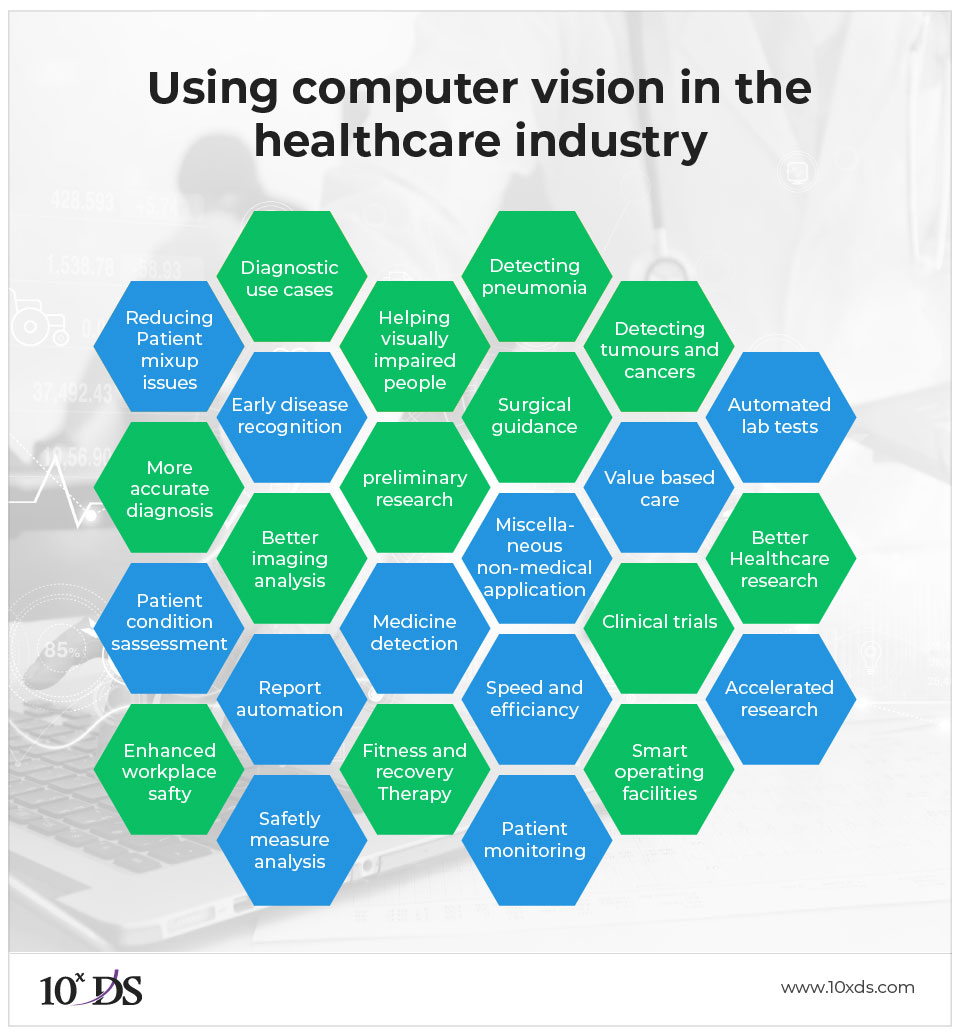 1. More accurate diagnosis
1. More accurate diagnosis
A lot of unnecessary deaths happen all over the world as a result of inaccurate diagnosis. Thankfully, applying computer vision in healthcare applications goes a long way in reducing this margin of error.
2. Early disease recognition
Certain health conditions can lead to higher chances of mortality due to delay in diagnosis. Sometimes late detection would gravely affect the recovery chances of patients. CV has a significant role in mitigating this situation. Conditions like cancer, pneumonia, osteoporosis, etc., can easily be detected early in patients by computer vision.
3. Speed and efficiency
Treating the disease fast and effectively is equally important as detecting it early. However, speed and efficiency are not a problem when using computer vision in medicine
4. Better medical imaging analysis
Computer vision allows 3D visualization, which is more informative than the standard 2D, and they help healthcare providers to make more informed decisions concerning patient care. Additionally, as there is a shortage of radiologists and MRI technicians in the healthcare sector, computer vision can also be considered an effective solution.
5. Detecting tumours and cancers by CV technologies
- Early detection of Brain tumours would go a long way to mitigate its dangerous effects on patients. Computer vision technologies like MASK-R Convolutional Neural Networks (MASK R-CNN) have been developed to detect tumours in patients and ensure they receive early treatment.
- Computer vision systems can be trained through ML and deep learning with data of cancerous and healthy tissues to detect lung and breast cancer more accurately and quickly than a human radiologist.
- There are apps that successfully use AI and other technologies to detect 95% of skin cancers.
6. Smart operating facilities
A study of Loyola University Health System found that surgeons forget instruments inside the patient in about 1500 surgeries per year in the US. By applying CV the surgical procedures can be visually recorded and surgical tools can be tracked and notified, thereby eliminating such issues.
7. Reduced patient mix-up
Patient misidentification is a common issue in the healthcare sector. This can even lead to dangerous consequences for the patient and the healthcare provider. A computer vision-enabled face recognition system can eliminate this problem.
8. Increased workplace safety
Surveillance systems enabled through computer vision and AI can monitor the staff for potential incidents and alert relevant authorities when needed. They can also track if the staff uses appropriate safety equipment and procedures.
9. Surgical guidance and surgical simulations
- Computer vision technology is also used to guide surgeons during procedures by using cameras enabled by machine vision.
- Some machine vision medical applications are used for training surgeons. This is to give them an experience of surgery beforehand, thus increasing success rates and reducing risks. Certain apps like Touch Vision, use CV technology to create realistic surgery simulations. The AI uses 3D imaging to make this simulation more accurate for the surgeon-in-training.
10. Better and accelerated Healthcare research
Computer vision has disrupted the world of medical research as well. It helps accelerate the investigation and testing of new treatments. For example,
- CV systems can perform faster, more accurate, and unbiased cell counting as compared to human workers.
- By analysing anonymized past patient records, CV-powered applications can detect and identify trends in disease progression. This helps save money and time spent on clinical trials and even discover how to cure the disease entirely.
11. Automating Lab Tests
Blood analysers that integrate machine vision in their application can run multiple patient results. For example, using computer vision, they can analyse blood count or tissue cells by going through several images.
12. Medical imaging
Medical computer vision companies also use this technology for medical imaging. This process uses computer vision and object detection to find anomalies in the scans of various vital organs. Physicians are leveraging apps based on CV like Arterys in MRI scans to make the proper diagnoses.
13. Patient Monitoring
Healthcare providers can also use computer vision to monitor the rehabilitation of outpatients and newly discharged patients. That way, healthcare providers can track their patient’s progress virtually.
Within the elderly community, fall detection systems that employ computer vision software and pose estimation. These systems aim at reducing the number of times older adults lose their balance. It also is equipped with technology that would quickly call for help when a user does fall.
14. Pneumonia detection
High expertise is required for detecting pneumonia using x-rays and takes a significant amount of time for obtaining accurate results especially in rural and remote areas which do not have accessibility to superior diagnostic procedures. An open-source project is published at the 2021 International Conference on Communication Information and Computing Technology (ICCICT) about an app to detect Pneumonia. The primary objective of this study is to detect whether a patient has pneumonia by his/her X-ray images through the utilization of OpenCV and Deep learning.
Although this use case has not been deployed yet, it shows the potential of computer vision in medicine and diagnostics.
15. Anti-Covid Measures Analysis
Computer vision has also been of help during this pandemic for COVID diagnosis, prevention, and treatment. Technologies like Masked Face Recognition, computed tomography, germ screening, etc., are ways computer vision has been used to manage COVID. Analysis of chest X-rays has also helped in COVID detection, with some algorithms reaching an accuracy of 97%.
There is software that uses computer vision to ascertain if health workers are doing the necessary steps to prevent exposure and transmission of COVID. This app would prove helpful in a hospital setting and would significantly reduce negligence cases on the part of health workers.
16. Cost reduction
All the benefits above would eventually lead to a decrease in the cost of healthcare services for patients. Automating healthcare services will lead to efficiency and speed, which would decrease the time a patient would spend either in the hospital or taking medications.
Challenges
Despite its numerous benefits, computer vision in medicine has not been generally accepted. Many people are sceptical about the use of this AI technology in healthcare for a good number of reasons. Such as the consequences of false negatives or false positives, lack of generalization, unemployment concerns, professional realignment etc.
Digitization cannot be paused for any one sector, so it is in the place of the people involved to prepare themselves for this shift and adjust accordingly.
Conclusion
Computer vision is not just a trend. It is an efficient and long-term solution in healthcare. It has the potential to enhance the medical workforce to deliver better quality and accurate services to patients and even save lives. CV technologies are gaining popularity because of their tremendous potential and plethora of applications, both of which will be crucial to improving your healthcare organization operations and business processes.
Hence, programmers continue to develop CV to ensure maximum efficiency and quite a number of start-ups around the globe are working to make the medical sector more collaborative and connected. Leverage 10xDS AI Computer Vision solutions to address your business and operational challenges.
